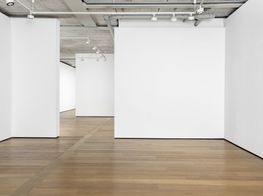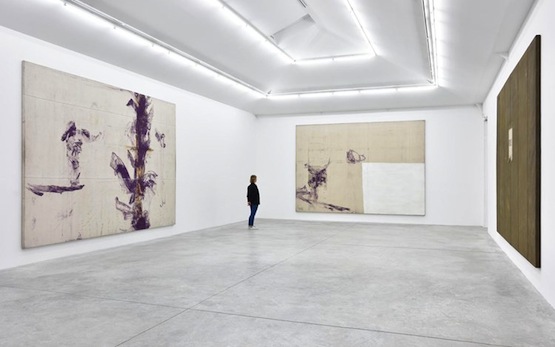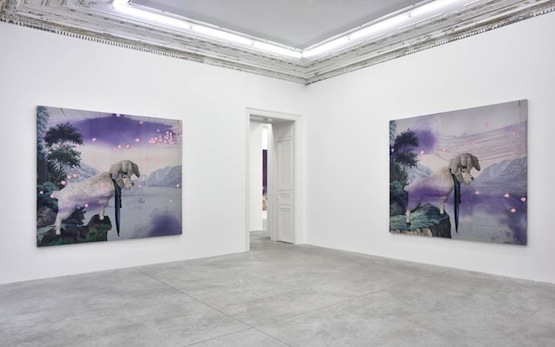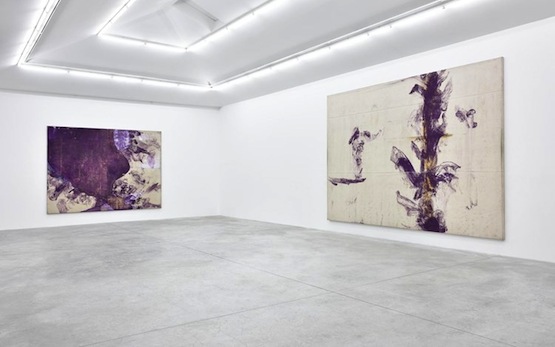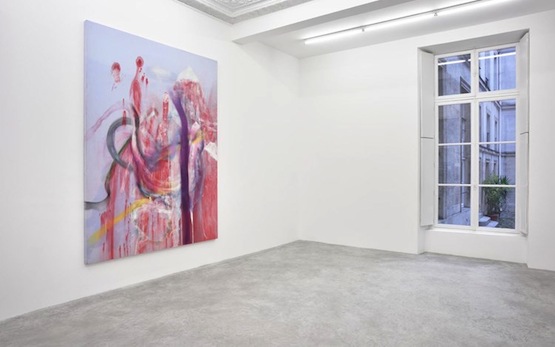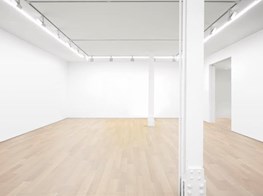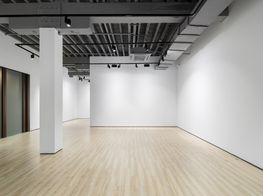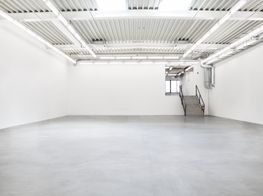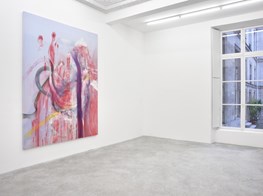Julian Schnabel
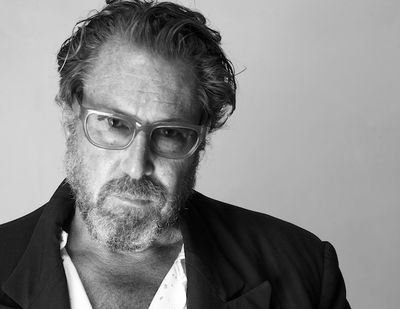
Julian Schnabel is a legend more than he is a man, known for his voracious appetites, his larger-than-life personality, and his seemingly limitless capacity to explore a range of creative activities successfully: from painter, to film director, to furniture designer, to sculptor, to architect. As a painter and since the 1980s, when he first garnered international acclaim for his Plate Paintings
, which are large scale figurative compositions painted on broken ceramic plates, he has exhibited everywhere from the Museum of Modern Art in New York, to the Centre Pompidou in Paris and the Tate Modern in London. As a filmmaker, he has directed five feature length films including Basquiat (1996), Before Night Falls (2000) and The Diving Bell and the Butterfly (2007); the latter won him the Award for Best Director at the Cannes Festival, and garnered four Academy Award nominations.
Currently, his solo exhibition Jack Climbed Up the Beanstalk to the Sky of Illimitableness Where Everything Went Backwards, is open at Almine Rech Gallery in Paris through 14 November. It features 12 paintings by Schnabel made over the course of the past 30 years; it is a small-scale retrospective, in essence. The works display the range of his output, as well as his refusal to become hedged into any single style or theme. Works on view include Virtue (1986), a work that hung in the 1987 Whitney Biennial and comprises a dilapidated brown-olive tarpaulin upon which a silk banner marked with gold type spelling out VIRTUE appears; a series of paintings executed on white tarpaulin from 1990; examples of his Goat Paintings, which feature a goat overlooking a military scene printed on 19th century Dufour wallpaper; and recent works from his Tour of Hell series, which are created by spraying paint on large-scale prints of photographs.
Prior to the opening of his Almine Rech show and against the backdrop of his studio in the Palazzo Chupi (the building he designed in Manhattan’s Greenwich Village) and three different series of paintings—one made using a tarp he bought in Mexico, another on large-scale photographs of a nude woman sailing, and a final created from splatter on the floor of his studio—Schnabel spoke about his process, the exhibition at Almine Rech, and the subject of beauty.
How did the show in Paris at Almine Rech come about?
I’ve known the owners Bernard [Picasso] and his wife Almine Rech for a long time. I’ve known them for 30 years, longer than that, and spent some time with them in Nîmes when I had some paintings in the Maison Carrée.
Exhibition view, Julian Schnabel, Jack Climbed Up the Beanstalk to the Sky of Illimitableness Where Everything Went Backwards, 2015. Courtesy of the artist and Almine Rech Gallery. Photo: Rebecca Fanuele
Tell me about what you decided to include in the Almine Rech show?
You’ll walk into the first room, and there will be three paintings from 1990, that are on canvas tarps. I used a hose to kind of disperse the ink [on them]. There was oil paint on a tablecloth and I threw the tablecloth up at the tarpaulin and then these images came out. I didn’t have a preconception about what they were going to be. One kind of looks like there’s this sculpture next to a green stalk, and another is kind of a big purple shape with lots of things that look like printed curls of hair or something, and then there’s another one that’s kind of emptier with a white box on one side. They’re going to hang alongside Virtue, which was made in 1986 on an army tarp.
I think [the gallery] wanted to show the kind of relationship between what I was doing before and what I’m doing now or what I’ve been doing. In a smaller room will hang two reverse paintings. They’re paintings that I was working on in Mexico. They began when I was spray painting one side. The spray would come through. I thought, you know, the backside looks more interesting than the front. There’s something generating its topography [that’s] disconnected from what it is, and there’s a kind of freedom to that, of not knowing how one arrived at something, so it’s more mysterious and less predictable. So, I made some paintings like that, they just, they look like abstract spray paintings.
Then there are three Goat paintings. The goat’s standing on this hill, overlooking, who knows what, Olympus or something.
I just think it’s interesting to see how images are formed. Basically, if you have no hierarchic notion of what paintings are supposed to look like or what their appearance should be then you can kind of include all of these different things. If you have a Whitman-esque sort of attitude where everything’s equal, then you can be surprising. I like to be surprised.
Exhibition view, Julian Schnabel, Jack Climbed Up the Beanstalk to the Sky of Illimitableness Where Everything Went Backwards, 2015. Courtesy of the artist and Almine Rech Gallery. Photo: Rebecca Fanuele
You work with such a wide variety of materials and imagery. For example, your Goat series is painted on top of 19th century Dufour wallpaper depicting George Washington accepting Cornwallis’ surrender. The paintings you have hanging in the studio where we’re sitting range from being painted on tarps, to broken plates, to a photograph of a naked woman on a sailboat. Where do you get your inspiration from, and how do you decide what materials to use?
Somebody sent me some wallpaper, thinking I would like it, not necessarily to paint on, just because it was my style. Then my daughter Stella saw some other wallpaper that was similar, and she bought it. I started to photograph the wallpaper and blow it up on polyester, which is the way that these paintings are made, they’re all on polyester.
And these images [he points to the naked women] are from the public domain. For some reason, in this particular series, the girl is always naked and the guys are dressed. It looks like a nice sunny day at first glance, but then it starts to seem like something really horrible, really ominous, is happening.
[He points to the purple drip abstract paintings, which look like aerial shots of a mountain.] Those forms come out of bumps that [were on the floor of my studio] where I had poured resin. I was using the hose, and the gesso and the ink were spilling on this floor. I took pictures of the floor with my iPhone and then I made these paintings.
Exhibition view, Julian Schnabel, Jack Climbed Up the Beanstalk to the Sky of Illimitableness Where Everything Went Backwards, 2015. Courtesy of the artist and Almine Rech Gallery. Photo: Rebecca Fanuele
It looks like a moonscape.
It looks like you’re at 35,000 feet. It’s nice that something can be physical and pictorial at the same time.
[He leads me into the anterior room of his studio, where three irregularly shaped and large-scale abstract paintings made from pink tarps hang on three separate facing walls.]
Ok, so for example, how does something like this happen? I’m driving down a road and a guy is selling toys and [other] little objects. This is the awning that’s covering his, shielding him from the sun in Mexico. So, I’m looking at this pink thing, and I’m driving and I’m thinking, God. I stop. He thinks I’m going to buy some toys and I say, well how much do you want for your tienda? He said, “Two thousand pesos.” I said, “Okay, I’m going to give you two hundred dollars.” He said, “Give me five hundred pesos.” And I said, “Wait a minute, I’m not bargaining with you, I just gave you a thousand pesos more than you asked me for …”
Exhibition view, Julian Schnabel, Jack Climbed Up the Beanstalk to the Sky of Illimitableness Where Everything Went Backwards, 2015. Courtesy of the artist and Almine Rech Gallery. Photo: Rebecca Fanuele
That is funny.
Anyway, I saw this material and I thought it was very beautiful, so that’s it. And then I tied a pole in between two palm trees, and the way it sat made a bow in the middle. I thought, “Why should I make it rectangular?” The whole skin of it had a history to it. The dirt gets in it, and the discoloration of the sun, and it leaves marks. It’s very hard to find that kind of space in something, or to make art like that, so, you know, I see something like [the tarp] and I think, oh, it’s just the treasure of Sierra Madre, you know, I just lucked out.
How do you know when a painting is finished?
When I don’t feel like doing anything else to it. I just think, if I do any more I’ll just ruin it.
How much of the time are you painting? Are you painting all the time?
I paint a lot. I like to paint.
Exhibition view, Julian Schnabel, Jack Climbed Up the Beanstalk to the Sky of Illimitableness Where Everything Went Backwards, 2015. Courtesy of the artist and Almine Rech Gallery. Photo: Rebecca Fanuele
Finally, I’m a fan of your films. Sitting here, talking to you for these past few minutes, and listening to you describe the paintings, I see that your work is all connected, it’s a continuation of the same theme, and that theme is beauty. You seem to see beauty in so much that is ostensibly disparate. Is beauty a word that you feel comfortable with in describing your work?
Yeah. I remember Bill Gaddis writing something and he was looking at the sky and he said, “and for a moment you saw the whole material of beauty”, and as he watched the sky form and then kind of dissipate and disappear, and [then he said], “’till the darkness marked the sky and it was no more”. It was a, um, yeah … [he pauses]. Different people have different ideas about what they think beauty is. —[O]

